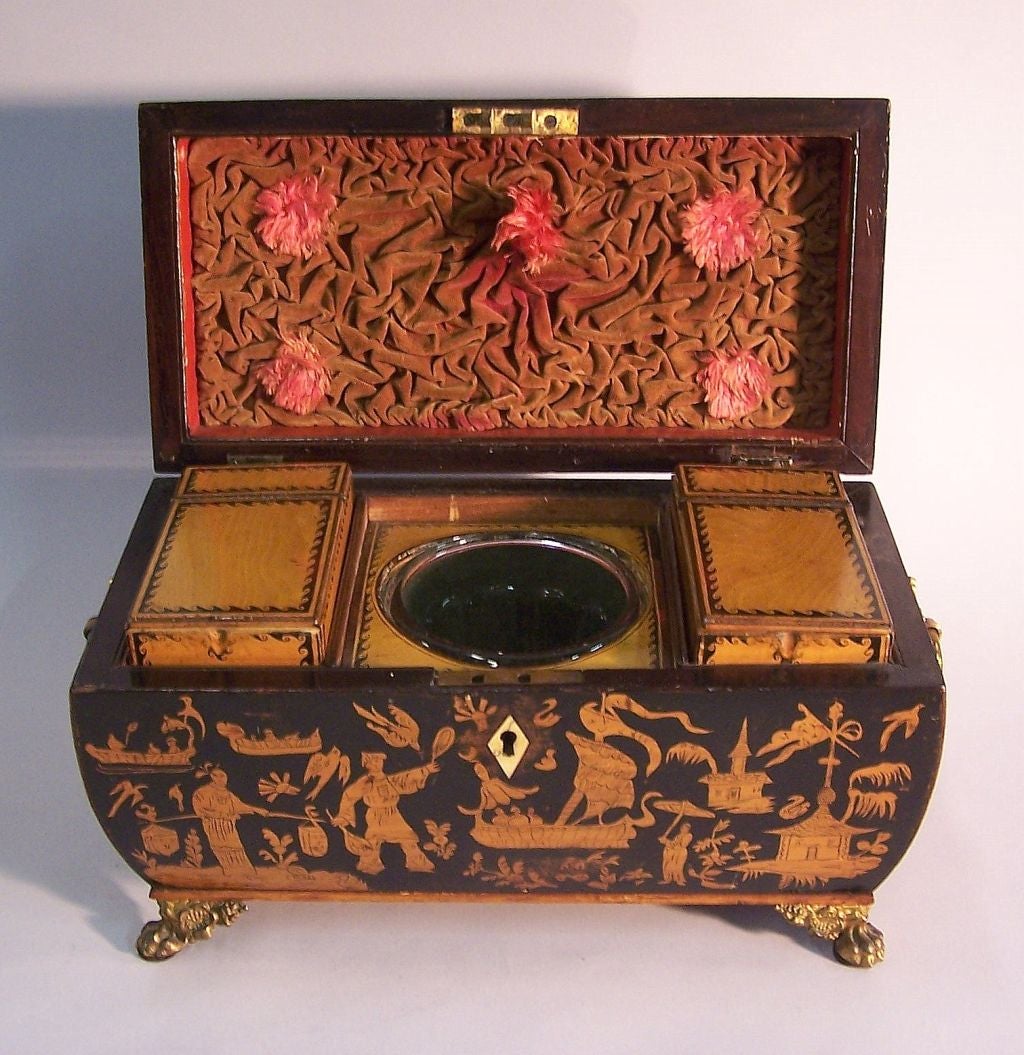According to Joseph Walsh in Tea, Its History and Mystery (1878) the first “direct importation” of tea into England occurred in 1669 and was limited to 100 pounds of premium product. London coffee-houses are credited (http://www.britainexpress.com/History/tea-in-britain.htm) with being the early adopters of tea importation.
Tea came largely from China and Japan until the East India Company began encouraging production in India. Until 1834, tea import was solely the domain of the East India Company and although they made persuasive arguments on how restricted the import and sale of tea was, it was nonetheless a monopoly that arguable increased the cost to the consumer. Therefore, tea was in many respects a luxury item relished by the wealthy and middle class.
The past and present state of the tea trade of England (1832)
Because of this expense, the actual brewing of the tea would have been the privilege and duty of the hostess. The butler or footman would have brought a tea tray containing hot water, a teapot, a tea caddy containing the treasured tea leaves and a waste bowl. The tea caddy would traditionally be a wooden box, that may or may not include sugar blocks, and be kept under lock and key to safeguard the precious tea leaves.
The hostess would blend the tea leaves to her taste and pour the hot water onto the leaves in the teapot to steep after first using hot water to warm the tea pot, and dumping that water into the waste bowl . The leaves then would’ve been strained with a strainer atop each china cup (http://www.georgianindex.net/Tea/ttable.html)

1820 Large Regency Chinoiserie Pen-work Tea Caddy
Here is a description from the servant’s perspective (The footman’s directory and butler’s rememberancer, 1823)
Tea was a hotly smuggled item, owing to its luxury status, and therefore a popular topic for discussion in Parliament, particular in relation to the East India Company’s monopoly on import. That luxury status also made it the highlight of social functions and entertainments like Tea Gardens rose to popularity in the Georgian era in homage to the beverage (http://www.britainexpress.com/History/tea-in-britain.htm), including Ranelagh and Vauxhall.
For those wondering of the flavors of tea:
The House Book ; Or, Family Chronicle of Useful Knowledge (1826)
For more information on types of tea and other interesting facts: http://www.georgianindex.net/Tea/ttable.html











